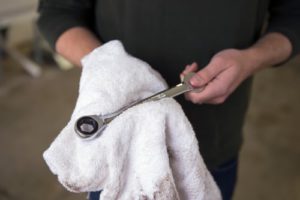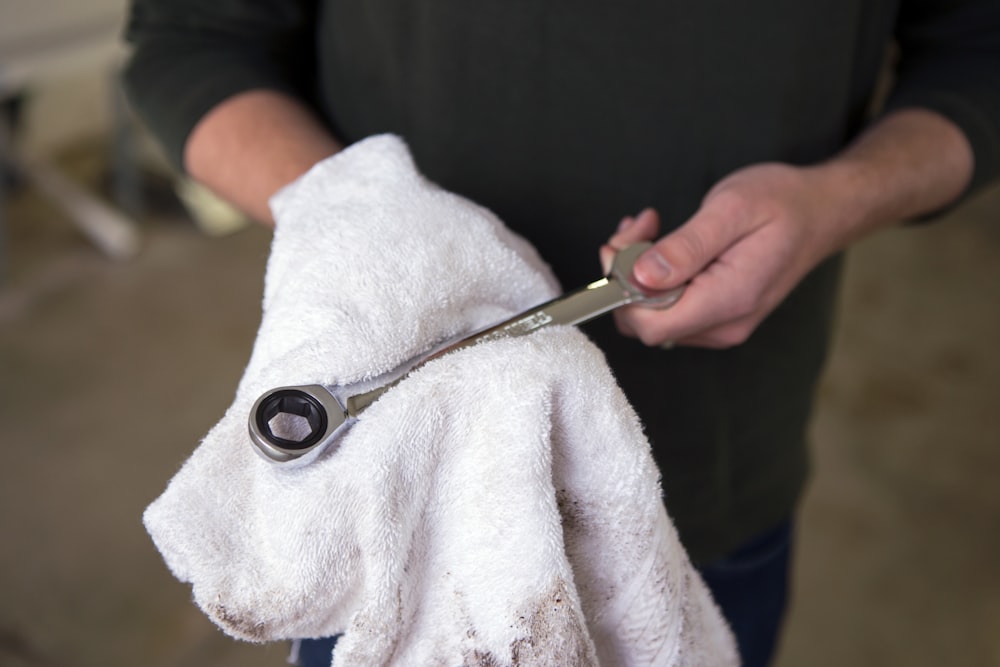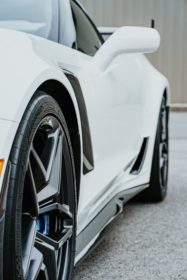
Torque means how much power it takes for the car to reach a certain speed.
So the more torque your car has the greater the acceleration.
It is a crucial part of generating power from a car’s engine as it represents the load an engine can handle to generate a certain amount of power to rotate the engine on its axis.
Do you ask yourself “how do torque sticks work?” read on, we are sure you will find this article helpful.
Torque could also mean a force employed or applied to rotate an object.
Torque is generated anytime you apply a force using a wrench such as tightening the lug nuts on your wheels.
It may also mean twisting or turning force that tends to cause rotation around an axis, which might be a center of mass or a fixed point.
WHAT IS A TORQUE STICK?
It is a stick used with an air impact wrench to avoid over-tightening fasteners when installing wheels.
Torque sticks work by flexing (like a torsion bar) when a torque limit is reached.
IMPORTANCE OF A TORQUE STICK
Torque sticks work by flexing (like a torsion bar) when a torque limit is reached.
When the stick flexes or is turgid, it resists further tightening of the fastener thereby helping to regulate the further application of torque thus preventing eventual damage that might occur.
The thicker the torque sticks, the higher the torque to the fastener.
Many people (drivers and technicians alike) do not know that torque sticks are designed for a limited range of torque input.
They must be used with an impact wrench, and if an impact tool with too high or too low setting is used, the torque stick will still over-torque the fasteners and may cause damage.
When using torque sticks, do not use them anywhere close to final torque.
Select a torque stick rated for about 2/3 of the final torque and then finish the last 1/3 of the specified torque with a torque wrench.
If the fasteners don’t move with a torque wrench before the click for final torque, there is a problem or the fastener has been over-tightened.
DOES TORQUE STICK WEAR OUT?
They do wear out.
It could be damaged as a result of excessive dropping, careless handling and backward usage.
WHAT IS THE RIGHT TORQUE PROCEDURE?
The procedure begins with checking the wheels, fasteners, and mounting faces of the hubs and wheels for dirt, rust, or damage.
The standard specification recommended for wheel fastener torque for every vehicle must be followed if the adequate result is to be achieved.
If dirty, you should use a wire brush to remove debris and rust and then replace any damaged parts.
A thread chaser or tap should be used to remove any obstructions on the threads.
The fastener should be easy to turn by hand until it meets the wheel’s fastener seat.
However, to secure a firm grip, you should avoid cleaners that contain lubricants (except heavy-duty trucks for which 30- weight motor oil is recommended for hub-pilot style lugs).
Also, anything that has the potential of vibrating loose or affecting the clamping force between the wheel and the hub should be avoided.
In spite of the above caution, the use of anti-seize compound is allowed if desirable, especially in areas where corrosion is a problem.
If applying anti-seize, it is important that you apply it only on the fasteners, not the stud.
The anti-seize compound must not be used on either the seat of the hardware or on the wheel.
The seat of the fastener is the main point of friction where torque is measured, so extreme caution must be used as excess anti-seize compound can either drip or be pushed onto the fastener seat, resulting in inaccurate torque values.
You should then install the wheel, holding it tightly to the hub, and hand-tighten the fasteners.
The use of a tool with limited torque is recommended here for consistency once the fasteners are all started.
It is important, at the pre-torque stage to follow the traditional star pattern sequence as recommended getting all the hardware even, with no looseness or wobble in the wheel.
Between 50 to 60 foot-pounds are enough for a good snug fit.
The clamping force created by fasteners is what allows wheels to function properly. All fasteners are intended to stretch slightly when tightened.
This stretch is measured indirectly by the torque required to turn the fastener.
If the wheel fasteners are not tightened properly, the wheel may loosen, resulting in wheel damage or, in the worst case, a wheel-off (which is the separation of the wheel from the vehicle) the consequences of which can be fatal or incurring a staggering liability claims running into millions!
Do not over-tight or under-tight your wheel fasteners as both are dangerous and unsafe.
Over-tightening stretches the stud or bolt past its yield level which can weaken and disallow it from returning to its original dimension.
As much as possible avoid heavy liabilities associated with wheel-offs by cultivating a proper torque habit staying within the recommended limit.
Brace the wheel to prepare it for final torque.
For heavy vehicles with high torque specifications, lowering the vehicle completely and putting all its weight on the wheels is not recommended.
You need to just lower it down enough to prevent the wheel from rotating during final torque or use wheel chocks if necessary to lock the wheel in place.
It’s instructive you have a regular procedure that is being used on your vehicle.
By doing it the same way every time, all the wheels on every tire will be done exactly the same.
It’s important to be consistent and professional about it as every driver and technician needs to know how wheels are to be mounted and the procedures to follow every time.
A regular procedure that is followed can be an important shield against liability claims.
Before applying final torque, setting the torque wrench to the specifications provided by the wheel or vehicle manufacturer will always be a safer bet.
The star pattern sequence should be used until all the fasteners are tightened to the specified torque.
First, hand-tighten the fastener then use the proper torque stick on an impact gun to tighten the wheel until there is tension on the fasteners and the wheel pulls up tight.
Lightly go over the fasteners again to tighten them a little more.
Please, resist the temptation of giving the wrench an extra click or two as this may ruin the fasteners as is the case with some cars.
That extra push defeats the purpose of the torque wrench, so when it clicks (or, if it’s electronic, does whatever it does to signal the proper torque has been achieved), stop.
WHAT IS THE PROPER TORQUE FOR WHEEL NUTS?
Therefore, it is important to use torque sticks with an air gun or a torque wrench to get the correct force.
If your studs or lug nuts are sized between 12 X 1.25mm to 1.5mm or are 7/16-inch, it is advised that you torque the nuts to 70 to 80 foot-lbs; 14 X 1.25mm to 1.5mm, to 85 or 90; 1/2=inch 75 to 85; and 9/16-inch 135 to 145.
Your Lug nuts are made to meet certain specified thread sizes of the studs on cars and are often tapered for wheel security.
Torquing your car-lug nuts to the proper specification is very important for your safety and the function of your car.
Improperly fixed nuts may loosen out while driving and tires may drop off while the vehicle is on the move; these portents a great danger to your life.
The impact gun must be set to a specific torque range and the air supply and pressure must remain constant.
Also, different torque sticks will often require different impact wrench settings.
It is unrealistic to expect a wrench-torque stick combination to be accurate without checking the impact wrench settings.
HOW TIGHT SHOULD MY CAR WHEEL NUTS BE?
Always check your car manual for the optimum torque value for your car or mounted rims.
Depending on the car model, rim size, design (aluminum or steel rims), and the number of bolts, it ranges between 110 N⋅m and 120 N⋅m.
CONCLUSION
With the above analysis and descriptions, it will be safe to conclude that your adherence to our recommendations will go a long way to maintaining proper handling of your vehicle at the same time keeping you safe on the road.
When next you ask how do Torque sticks work we hope you can refer to our article and find it informative.
If you have any comments or questions kindly leave them in the box below, we will be glad to hear from you.






Good article with advice appropriate to proper use of Torque sticks.